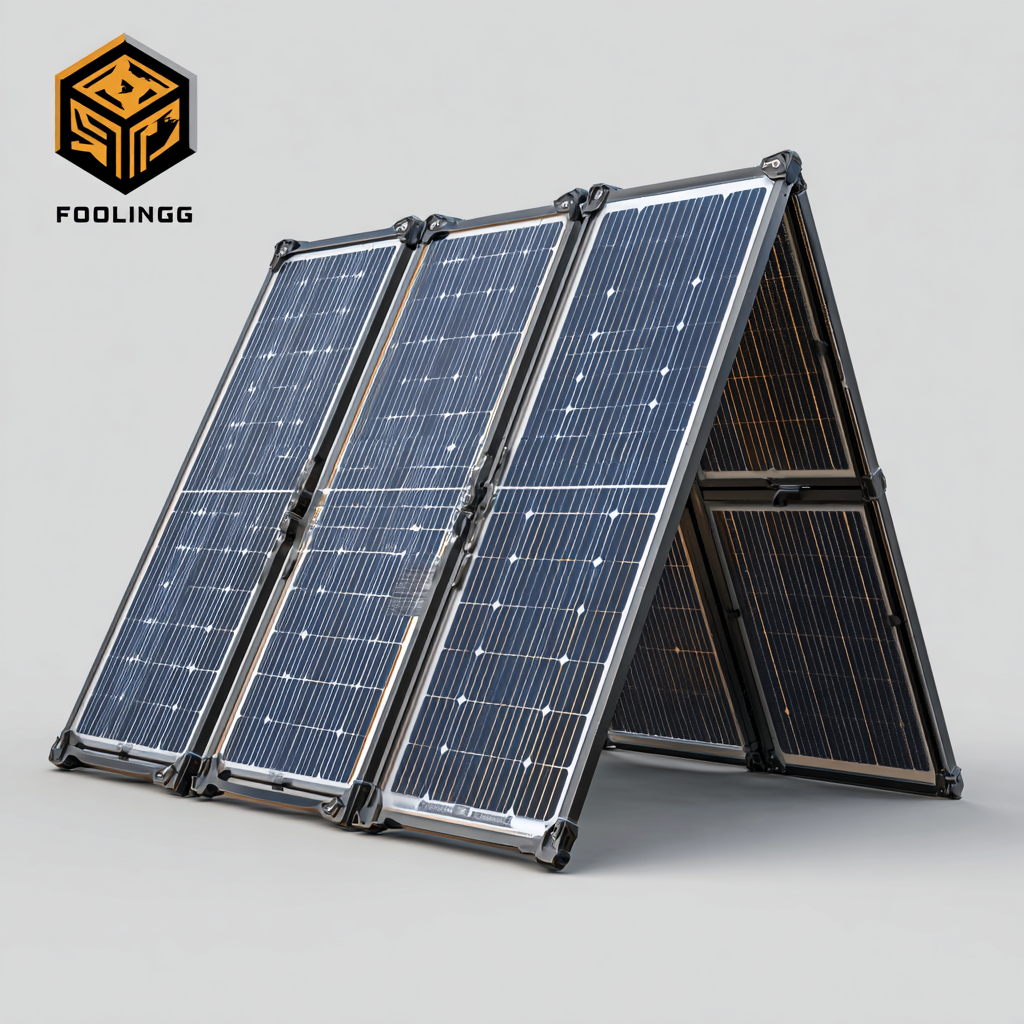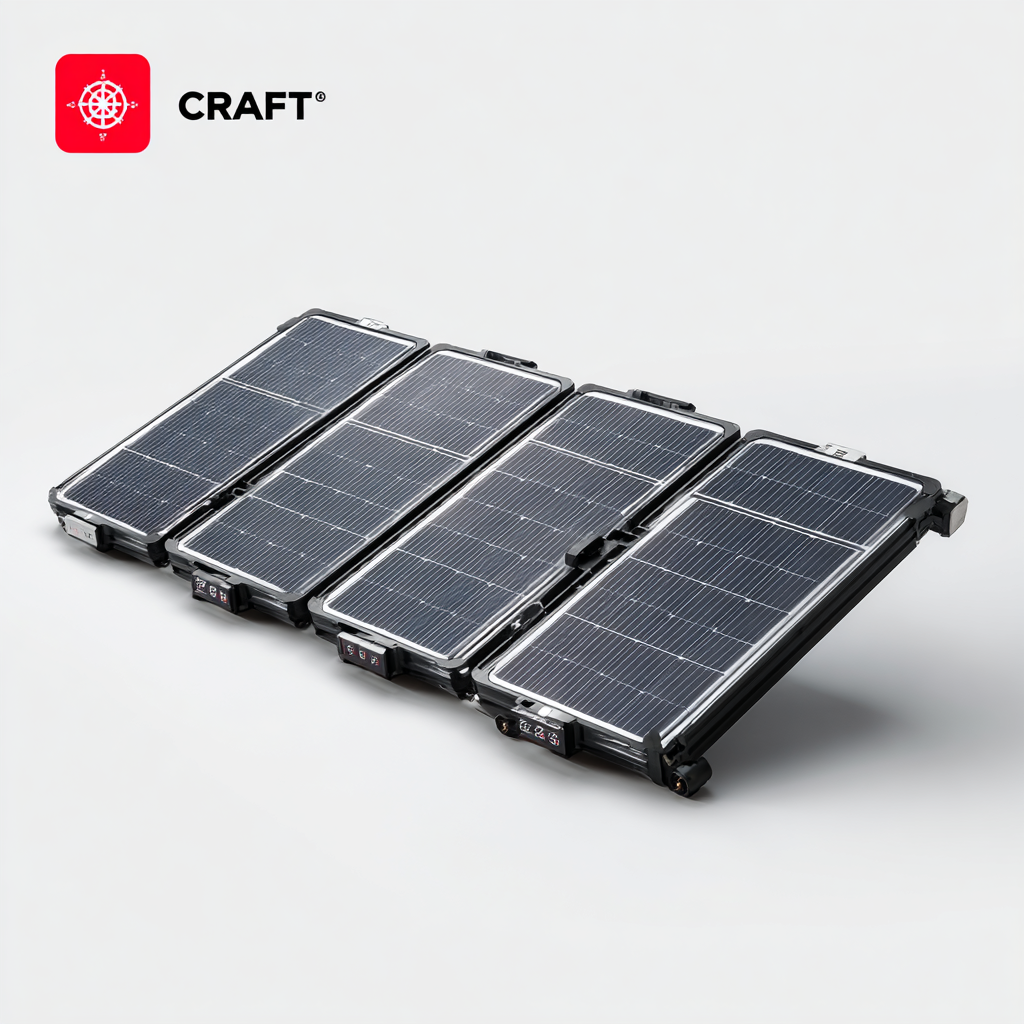
Global Leaders in Foldable Solar Innovation Crafted with Quality in China
As the global demand for renewable energy sources continues to surge, the innovation of folding solar panels has emerged as a pivotal solution for efficient energy generation and portability. According to a recent report by the International Renewable Energy Agency (IRENA), solar energy could account for up to 50% of global electricity generation by 2050, underscoring the importance of advancements in solar technology. China, being a leader in solar panel production, has set a standard for the industry with rigorous import and export certification processes, ensuring that only high-quality products reach international markets. With the integration of cutting-edge technology and sustainable practices, the folding solar panels produced in China not only cater to diverse consumer needs but also contribute significantly to expanding the global footprint of renewable energy solutions.

Challenges in Sustainable Materials for Foldable Solar Panels: A Quality Assessment
The rise of foldable solar panels has revolutionized the renewable energy landscape, captivating both consumers and industries alike. However, the journey toward producing these innovative solutions using sustainable materials presents unique challenges. One major hurdle is the sourcing of eco-friendly resources that meet the rigorous performance standards expected by users. Traditional solar panels rely heavily on non-renewable materials, which raises concerns over their long-term sustainability and environmental impact. This brings to light the need for industry leaders to prioritize quality assessments that evaluate the durability and efficiency of alternative materials in foldable solar technology.
Moreover, the manufacturing process plays a crucial role in ensuring quality and sustainability. In China, where the bulk of foldable solar panels is produced, maintaining a balance between mass production and eco-friendly practices is essential. Companies are now exploring biodegradable materials and innovative manufacturing techniques that minimize waste. However, this requires a commitment to research and development, as well as investment in new technologies that can pave the way for greener solutions. The challenge lies not only in creating high-quality products but also in fostering an industry-wide shift towards embracing sustainable practices that can redefine the future of renewable energy.

Evaluating Efficiency: Key Performance Metrics in Foldable Solar Technology
Foldable solar technology has seen remarkable advancements, and evaluating efficiency remains crucial in understanding its capabilities. Key performance metrics include the conversion efficiency of the solar cells, which measures how effectively sunlight is transformed into usable energy. Higher conversion rates indicate a greater ability to harness solar power, making it essential for users who require portability without sacrificing output. Innovations in materials, such as the use of monocrystalline silicon or advanced thin-film technologies, have significantly improved these metrics, leading to foldable solar panels that are both lightweight and efficient.
Another important performance metric is the power density, which refers to the amount of power generated per unit area. A greater power density allows for more energy production within a compact form factor, making these solar solutions ideal for outdoor activities and emergency situations. Additionally, durability and resistance to environmental factors, including extreme temperatures and moisture, contribute to the overall efficiency of foldable solar panels. As global leaders in this field innovate with quality manufacturing processes in China, enhancements in these key performance metrics will drive the adoption of foldable solar technology worldwide, catering to an ever-growing demand for sustainable energy solutions.
Efficiency Comparison of Foldable Solar Panels
Addressing Portability: Engineering Solutions for Optimal Folded Design
The surge in demand for renewable energy solutions has propelled foldable solar panels to the forefront of innovation, particularly engineered in China. These panels prioritize portability, making them essential for outdoor activities, emergency situations, or travel. The engineering of a compact and lightweight design allows users to transport power generation solutions without sacrificing efficiency.

When considering foldable solar options, it’s crucial to focus on portability features. Look for panels that offer an ultra-lightweight design, which can effortlessly fit into backpacks or camping gear. Additionally, ensure that the connectors and accessories are user-friendly; this attention to detail can greatly enhance the convenience of setting up your solar solution in various settings.
Another tip is to check the panel's flexibility and durability under different conditions. The best foldable solar products are designed to withstand the rigors of outdoor use while maintaining optimal performance. Selecting products with robust materials not only ensures longevity but also provides peace of mind during your adventures, knowing that reliable power is just a flap away.
Regulatory Hurdles: Navigating Compliance in Global Solar Innovation
Navigating the landscape of foldable solar innovation brings forth a unique set of regulatory hurdles that companies must carefully maneuver. As the demand for sustainable energy solutions skyrockets, governments around the world are implementing stringent policies and standards. These regulations are designed to ensure safety, efficiency, and environmental compliance, but they can also pose significant challenges for manufacturers, particularly those in China, a major hub for solar technology. Companies must remain vigilant, investing time and resources to understand local laws and international regulations to maintain their competitive edge.
One of the primary obstacles is the varying degrees of regulatory frameworks across different regions. While some countries encourage innovation with supportive policies, others impose restrictive measures that can hinder progress. To effectively launch and market their foldable solar products globally, manufacturers must not only comply with existing regulations but also anticipate future changes. This requires a proactive approach to quality assurance and compliance management, ensuring that products adhere to both local and global standards. By prioritizing regulatory navigation alongside innovation, companies can successfully bring high-quality solar solutions to the global market while promoting sustainable energy development.
Global Leaders in Foldable Solar Innovation Crafted with Quality in China - Regulatory Hurdles: Navigating Compliance in Global Solar Innovation
| Dimension | Value |
|---|---|
| Total Foldable Solar Panels Manufactured | 5 Million Units |
| Export Markets | North America, Europe, Asia-Pacific |
| Average Energy Conversion Efficiency | 22% |
| Regulatory Compliance Standards | ISO 9001, IEC 61215 |
| Average Product Lifespan | 25 Years |
| Customer Satisfaction Rate | 95% |
| R&D Investment (Annual) | $50 Million |
| Number of Patents Filed | 120 Patents |
Cost vs. Quality: Analyzing Economic Impacts on Foldable Solar Production in China
As the demand for sustainable energy solutions grows,
foldable solar technology has emerged as a leading trend, especially in China. However, producers often grapple with the balance between cost and quality in their manufacturing processes. Lowering production costs can sometimes lead to compromised quality, ultimately affecting the product's efficiency and longevity. Companies must carefully analyze their supply chain and material selection to ensure they don’t sacrifice performance for savings.
Tip: When assessing suppliers for foldable solar panels, prioritize those who adhere to strict quality control protocols. A well-established supplier in China may offer competitive pricing while ensuring high-quality standards, which can be crucial for maintaining the integrity of your product in the long run.
Moreover, the economic implications of this balance cannot be overlooked. Investing in superior materials might lead to higher upfront costs, but the long-term benefits in durability and efficiency typically outweigh these initial expenditures. Cost-effective choices can lead to success, but they should not come at the price of quality.
Tip: Consider implementing a life-cycle cost analysis to evaluate the long-term benefits of investing in higher-quality materials for solar production. This approach will provide a clearer picture of potential savings and performance enhancements over time.

